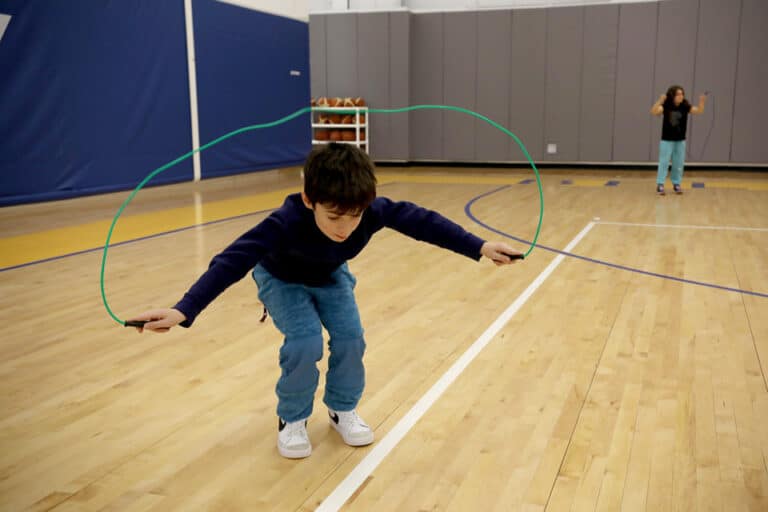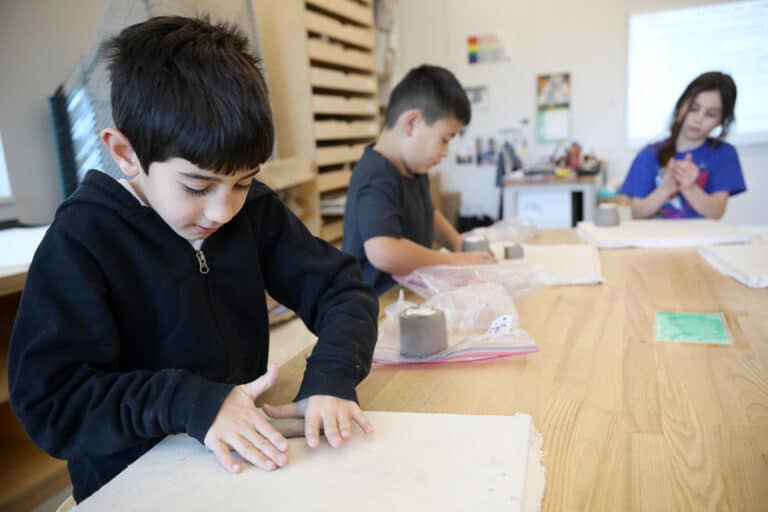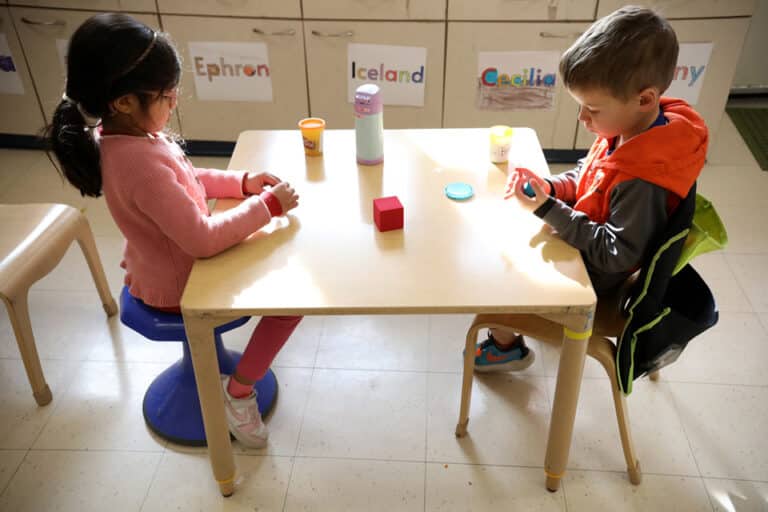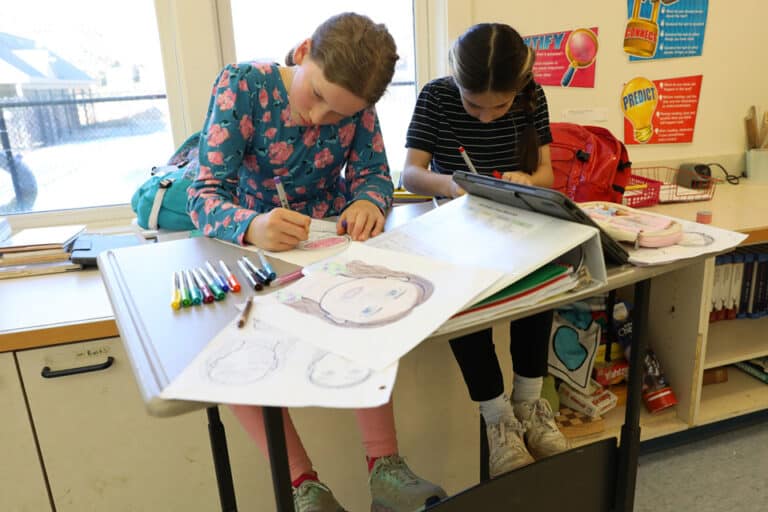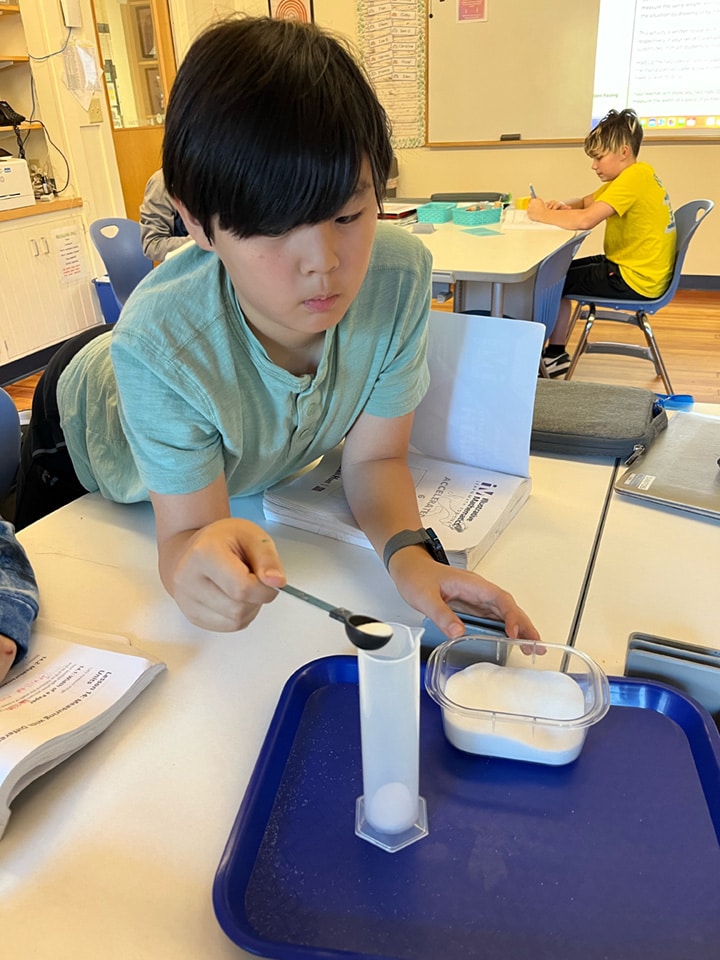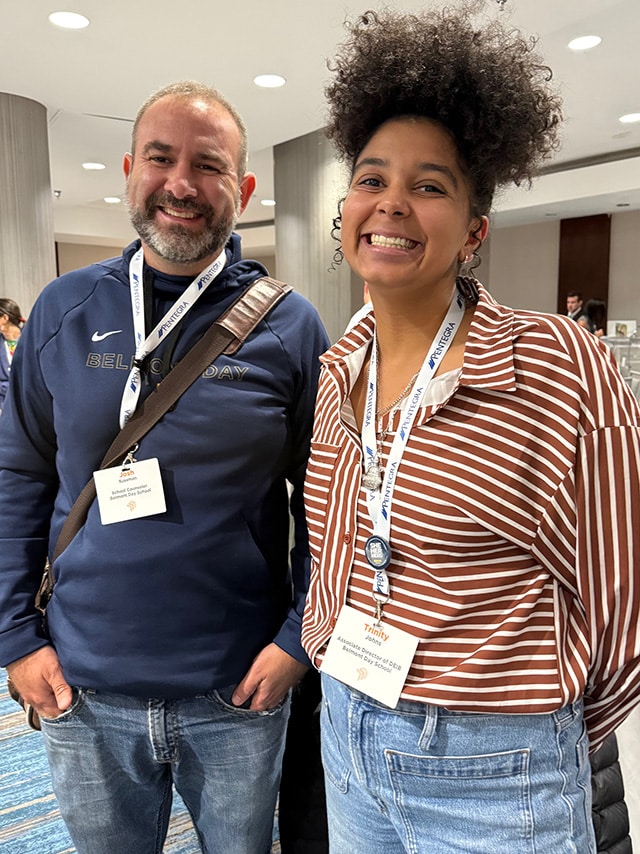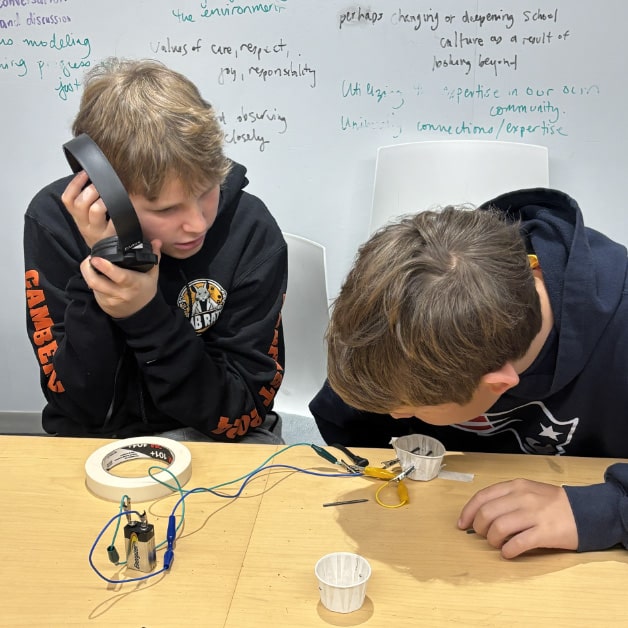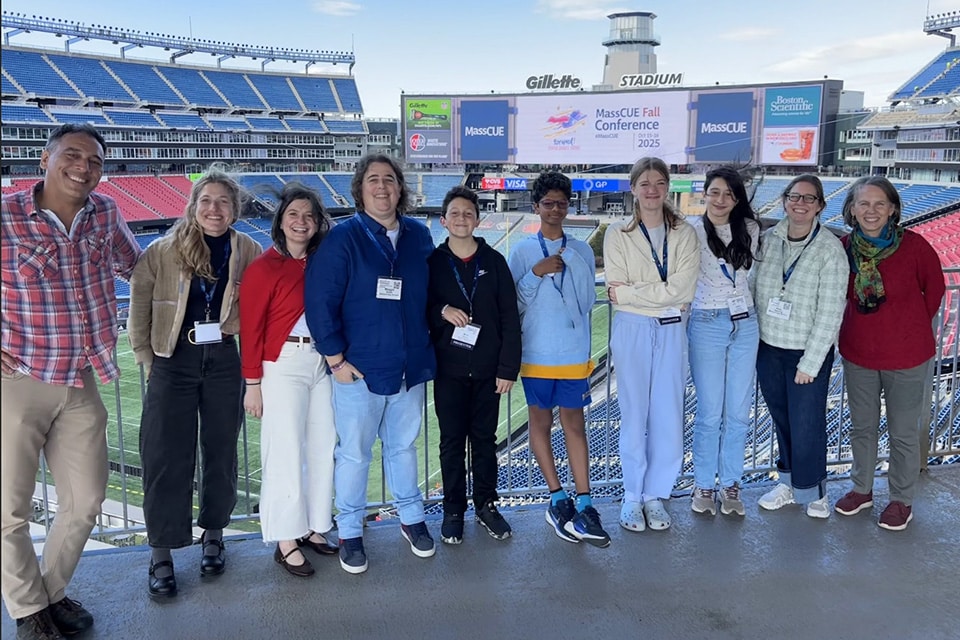Seventh Grade Math Rounds Out a Lesson on Circles
Students in seventh grade math are studying circles. This week, students explored different circle characteristics, specifically the relationship between a circle’s circumference and diameter. In order to explore this relationship, students measured the diameter and circumference of a variety of round household objects from pretty small to quite large. Items included a frying pan, a can of peas, a mug, a colander, a frisbee, and a hula hoop. Students made a class graph of all diameter/circumference pairs and discovered something amazing; there is a proportional relationship between the circumference and diameter of a circle, with pi as the constant of proportionality! Students explored the different approximations of pi that are commonly used and solved problems with pi. Some students were excited to share how many digits of pi they had memorized. How many do you know?
– Emma Nairn and Sarah Pikcilingis, seventh grade math teachers
PE Update: Jumping For Joy!
This week several grades began their jump rope unit with some epic jump rope inspirational videos. We highlighted that some of the best athletes in the world train by jumping rope. It builds footwork, endurance, strength, and coordination. But more importantly, it hits on two key elements of physical education: fun and fitness.
Our students begin their jump rope journeys with practice jumps over a stationary rope placed on the ground, and then progressing to “the turn”—the skill of bringing the rope from one’s heels, over one’s head, and down to one’s toes. Then comes the jumping variations: single bounce, double bounce, ski jumps, X motion, forwards cross, backward cross … the list of new challenges to try goes on. We practice in stations, use our long rope, and work on having a growth mindset and committing the rope movements to muscle memory. At the end of class, the exhaustion and joy are often evenly matched.
– Alex Tzelnic, physical education teacher and mindfulness director
Arts Update: Second Graders Clay Creation Will Soon Ring Out
Second graders are making ceramic bells in art class this term. They first learned how to roll clay coils in a consistent diameter. Using a cup as a mold, they wrapped the coils around the mold to form the basic bell shape and then smoothed or welded the coiled surfaces together. Next, using extra clay, students added shapes onto the clay surface and used tools to inscribe into the clay to finish the basic form. Using a method called “scratch and attach”, artists learned how to add pieces to clay forms by first scratching the adhering surfaces, then applying a layer of water and finally applying pressure to make the pieces stay together. They based their creations on animals, patterns, sports, and other interests. To finish these handmade bells, second graders will add glazes, a handle, and a clay clapper to make the bells ring!
– Kathy Jo Solomon, visual arts teacher
Kindergarten Learns All About Shapes
Kindergartners in Mrs. Hartvigsen’s class have been learning all about 3D shapes in math. This week, they began a deep dive into understanding what makes a shape 3D or 2D. They focused on one specific 3D shape each day. They learned about the characteristics of the shapes, hunted for an example of each 3D shape within the classroom, and even sculpted their own version out of Play-Doh. By the time we reach winter break, we anticipate that the kindergarteners will truly be shape scholars!
– Missy Hartvigsen, kindergarten teacher
Fifth Graders Explore Different Perspectives
To end our second unit, fifth graders created Mind Maps. For this project, students showed their understanding of someone else’s perspective (both internally and externally). Students depicted either Morning Girl or Star Boy (from the novel Morning Girl) in one Mind Map and Christopher Columbus in the other. Students had to use evidence from different texts to support their creative choices. The “external” drawing included an illustration of the person/characters. The “internal” drawing included three descriptive words or phrases, two thoughts that person/character had, and one action or quote that the character/person did or said, all with supporting page numbers.
– Vaniecia Skinner, fifth grade teacher
A Sweet and Salty Lesson in Sixth Grade Math
This week in sixth grade math, students explored how it takes more of a smaller unit or fewer of a larger unit to measure the same quantity. Students used many methods to learn and play with this concept. Noah Yang (see photo) used a teaspoon to see how many teaspoons of salt you need to fill a graduated cylinder to 20, 40, and 50 milliliters. Another group weighed different items to see their weights in ounces, pounds, grams, and kilograms. Did you know that a liter is slightly bigger than a quart? Our sixth graders do!
– Brittany Ryan, sixth grade math teacher

